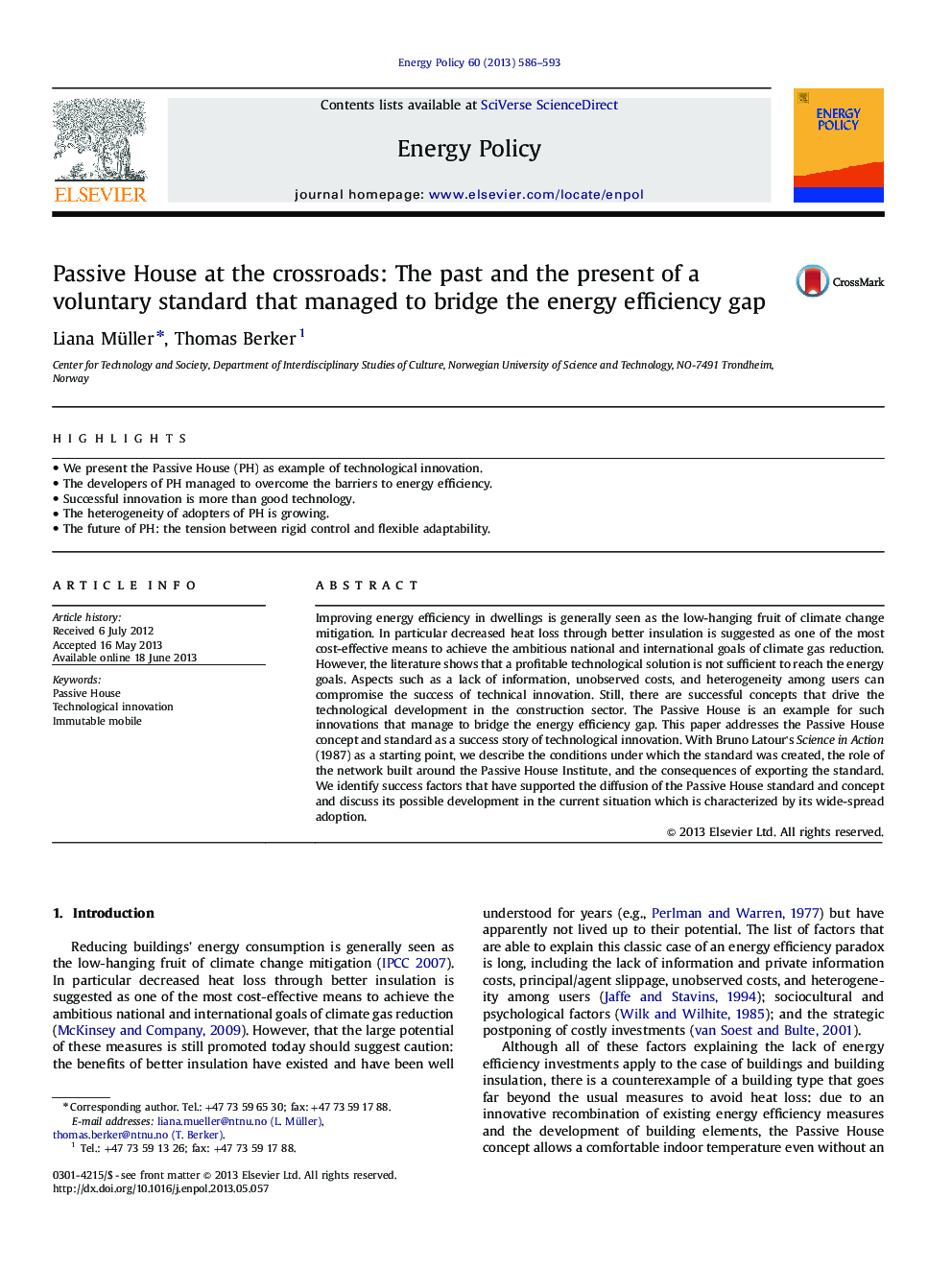| کد مقاله | کد نشریه | سال انتشار | مقاله انگلیسی | نسخه تمام متن |
|---|---|---|---|---|
| 7404985 | 1481298 | 2013 | 8 صفحه PDF | دانلود رایگان |
عنوان انگلیسی مقاله ISI
Passive House at the crossroads: The past and the present of a voluntary standard that managed to bridge the energy efficiency gap
ترجمه فارسی عنوان
خانه منفعل در تقاطع: گذشته و حال یک استاندارد داوطلبانه که توانست شکاف کارآیی انرژی را از بین ببرد
دانلود مقاله + سفارش ترجمه
دانلود مقاله ISI انگلیسی
رایگان برای ایرانیان
کلمات کلیدی
خانه منفعل، نوآوری تکنولوژیک، تلفن همراه غیر قابل تعویض،
ترجمه چکیده
بهبود بهره وری انرژی در خانه ها به طور کلی به عنوان میوه های کم محصوالت کاهش تغییرات آب و هوایی دیده می شود. به طور خاص، کاهش تلفات گرما از طریق عایق بندی بهتر، به عنوان یکی از ابزارهای مقرون به صرفه برای دستیابی به اهداف بلندپروازانه ملی و بین المللی کاهش گازهای گلخانه ای است. با این حال، ادبیات نشان می دهد که راه حل تکنولوژیکی سودمند برای دستیابی به اهداف انرژی کافی نیست. جنبه هایی مانند کمبود اطلاعات، هزینه های ناخواسته و ناهمگونی در میان کاربران می توانند موفقیت نوآوری فنی را به خطر بیندازند. با این حال، مفاهیم موفق هستند که توسعه فن آوری در بخش ساخت و ساز را هدایت می کنند. منزل منفعل نمونه ای برای نوآوری هایی است که توانست شکاف بهره وری انرژی را از بین ببرد. این مقاله به مفهوم و استاندارد منزل منزوی به عنوان داستان موفقیت نوآوری های تکنولوژیک اشاره دارد. با علم برونو لیتور (1987) به عنوان نقطه شروع، ما شرایطی را مطرح کردیم که استاندارد ایجاد شد، نقش شبکه ساخته شده در اطراف موسسه منحصر به فرد خانه و عواقب صادرات استاندارد. ما عوامل موفقیتی را که از گسترش استاندارد و مفهوم خانه منفعل پشتیبانی کرده اند شناسایی کرده ایم و در مورد وضعیت توسعه فعلی آن در وضعیت کنونی بحث خواهیم کرد که با پذیرش وسیع آن مشخص می شود.
موضوعات مرتبط
مهندسی و علوم پایه
مهندسی انرژی
مهندسی انرژی و فناوری های برق
چکیده انگلیسی
Improving energy efficiency in dwellings is generally seen as the low-hanging fruit of climate change mitigation. In particular decreased heat loss through better insulation is suggested as one of the most cost-effective means to achieve the ambitious national and international goals of climate gas reduction. However, the literature shows that a profitable technological solution is not sufficient to reach the energy goals. Aspects such as a lack of information, unobserved costs, and heterogeneity among users can compromise the success of technical innovation. Still, there are successful concepts that drive the technological development in the construction sector. The Passive House is an example for such innovations that manage to bridge the energy efficiency gap. This paper addresses the Passive House concept and standard as a success story of technological innovation. With Bruno Latour's Science in Action (1987) as a starting point, we describe the conditions under which the standard was created, the role of the network built around the Passive House Institute, and the consequences of exporting the standard. We identify success factors that have supported the diffusion of the Passive House standard and concept and discuss its possible development in the current situation which is characterized by its wide-spread adoption.
ناشر
Database: Elsevier - ScienceDirect (ساینس دایرکت)
Journal: Energy Policy - Volume 60, September 2013, Pages 586-593
Journal: Energy Policy - Volume 60, September 2013, Pages 586-593
نویسندگان
Liana Müller, Thomas Berker,
